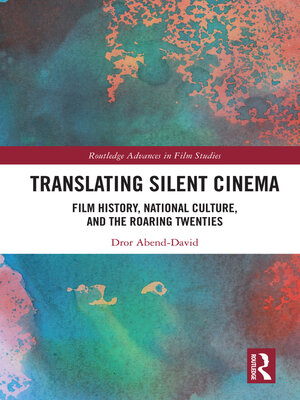Translating Silent Cinema
ebook ∣ Film History, National Culture, and The Roaring Twenties · Routledge Advances in Film Studies
By Dror Abend-David

Sign up to save your library
With an OverDrive account, you can save your favorite libraries for at-a-glance information about availability. Find out more about OverDrive accounts.
Find this title in Libby, the library reading app by OverDrive.



Search for a digital library with this title
Title found at these libraries:
| Library Name | Distance |
|---|---|
| Loading... |
Translating Silent Cinema examines closely the translation, adaptation, and reception of three silent films in English, German, and Yiddish to argue that the study of film translation should extend beyond textual translation to a wide selection of primary materials and the consideration of social, economic, cultural, and historical contexts.
Close readings of Der Kaufmann von Venedig [The Merchant of Venice] (1923), Das alte Gesetz [The Ancient Law] (1923), and Ost und West [East and West] (1923) raise a theoretical question: Can we discuss films in the same way that we discuss theater productions, regarding each individual screening as a performance, and compose a "performance history" of different films? As no two film screenings are the same, the author highlights the importance of a multidisciplinary approach to translation that combines insights from film studies, translation studies, and cultural and historical contexts. Furthermore, in linguistic comparison and in the study of the reception of the films in each language, this book argues that each film is the subject of very different receptions under very different circumstances. It also analyzes the relevance of films that were made in Austria and in Germany during the 1920s on Jewish themes to a contemporary debate about immigration, racism, and discrimination.
This book's pioneering analysis of the study of film translation encompasses a wide context of multiplicity of ideologies, economic interests, and historical contexts. It will be of interest for readers in translation studies (particularly in audiovisual translation), film studies, German studies (and German cinema), and Jewish studies (and cinema).







